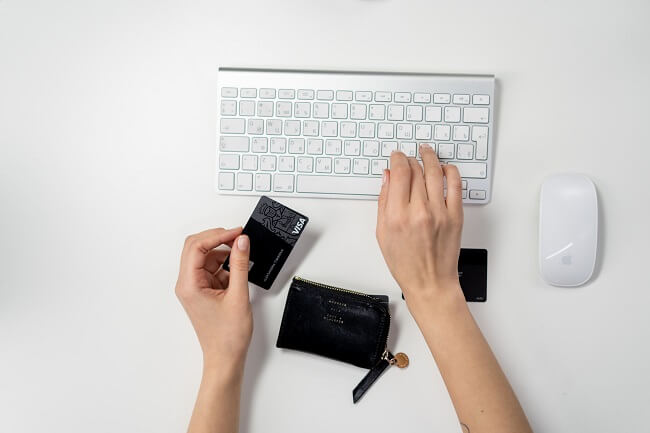In the U.S. alone it’s been predicted that up to 25,000 shops will close nationwide due to the pandemic outbreak. Businesses closing their doors who are unsure what to do next, it seems the best option would be a transition to online commerce as a means to stay afloat throughout the crisis.
Many companies not accustomed to selling their products online have still managed to quickly set up sites to keep their business running and bring in sales. Although times are rough for small businesses, fortunately, China’s economy has recently seen positive effects on ROI as peoples’ lives return to normalcy. From this, you can see definite hope in restoring your own business. There is still a lot to learn to transform your offline business online for an increased ROI, but this article will cover everything from consumer behavior to site creation to help you get started.
Consumer Behavior
With uncertainty in the air and panic buying at an all-time high, online sales have seen rapid changes throughout the last few months. Essential products have surged in price with high demands across the world for cleaning supplies, toilet paper, and hand sanitizer. Hand sanitizer alone has had a 600% year over year growth since 2019 because of the increased health precautions people are now taking.
It’s been important for businesses to follow these consumer behaviors to attract sales to their own sites. Despite 96% of young demographic Gen Z concerned about the pandemic and significantly cutting back on spending, Boomers’ spending patterns have barely fluctuated over the past couple of months with only 24% allowing the virus to impact their buying habits, which is important to know when targeting your audience.

With people advised to stay home, there has been an increase in household shopping. From spending on kitchen supplies to home decor, these industries have seen an increase, as opposed to many retail businesses. Luxury brands have especially been hit hard with consumers not seeing a need to buy these high-priced items when they are merely stuck inside their homes.
The coronavirus business impact has been rough but brands are working hard to adapt and persuade consumers that they do, in fact, need their products and have set up marketing strategies towards persuading buyers.
5 Tips for Starting Your Online Shop
Since we know that consumers aren’t really buying anything they do not need at this time, start to evolve your business and adapt your online site based off of consumer behavior:
Creating an Online Store: Find a platform that will fit your industry and customer needs. By researching which software will help you showcase your products best, it will create a great foundation for the start of your online sales campaigns. Using a program such as Wix or Squarespace can be helpful when opening your online store, as these programs provide templates to get your business started at a budget-friendly price.
Diversify Your Products: People have lost interest in buying anything but essentials. If you’re a retail brand, try offering essential products to your audiences such as branded hand sanitizers or soaps. Clothing brand Aritzia started selling facemasks on its website to entice consumers to shop their site, along with adding an essential item to their cart.
Prices & Sales: Even if your company has been hurting from the effect of COVID-19, keep in mind, customers’ incomes have been, too. Don’t try to compensate by raising your prices, instead work on lowering your prices and create sales to persuade consumers to make a purchase. Even with your business mainly offering non-essential to consumers, if the price is right, you’ll begin to see an increase in ROI.
Coronavirus Marketing: Be aware of current events and market your products accordingly. Your company needs to work on branding products as something a customer needs during this time. From the start of quarantine advising everyone to stay home, clothing brands shifted quickly to marketing loungewear instead of their new spring pieces, as this is something a consumer shopping from home might need. For example, clothing brand Nasty Gal has created a trending section labeled ‘loungewear’ to entice people to shop in that category.
Social Media: Make sure to be promoting your products on all your social media platforms. The more searchable your business is, the more likely consumers will visit your site to shop. Times are competitive and brands are turning to an array of platforms to promote their products. Be sure to stand out against your competitors and bring attention to your targeted audience. Rhode Island-based coffee shop The Nitro Cart has used their Instagram handle to direct their 11.7k followers to their website by advertising a new product in a post.

Having a sturdy website already set-up as upcoming trends surface will help your business compete against industry competitors. With lockdowns across the world slowly lifting, consumer shopping trends will continue to change, so make sure to keep up with maintenance of your online store as time progresses. Improving your site’s SEO, creating easy check-outs, and making sure your page speed is adequate will help towards gaining and maintaining traffic to your website.
Conclusion
As economies begin to restore, prevalent trends have surfaced including customers’ need for human interaction. While AI had started to progress with online shopping, people are now looking for personalized shopping experiences and interactive customer service with retailers before making a purchase. The pandemic creates uncertainty in peoples’ lives; consumers are relying on trust between brands to fulfill their shopping experience. Work on being that trustworthy site and be optimistic about your business growth during COVID-19.





Tell us your thoughts in the comments